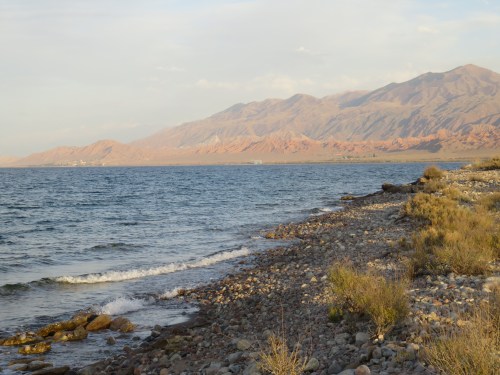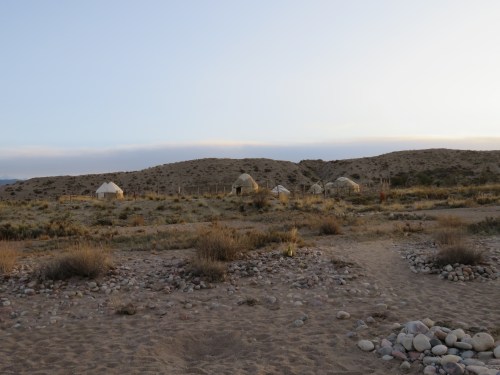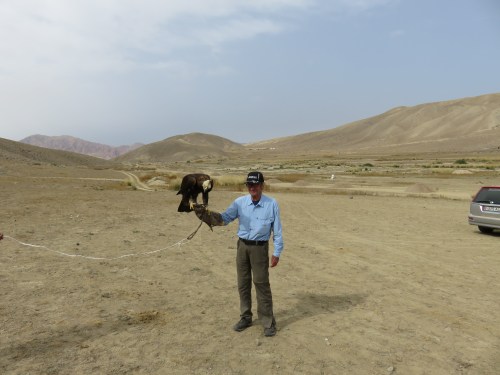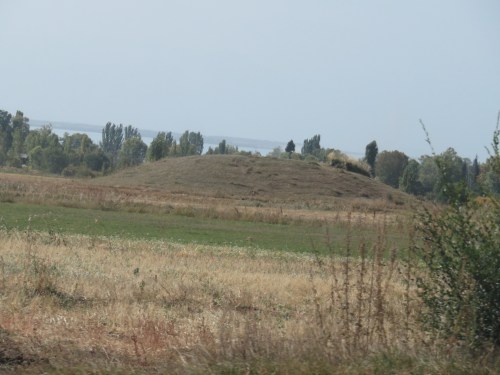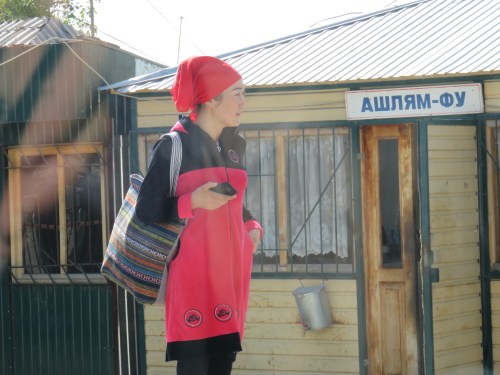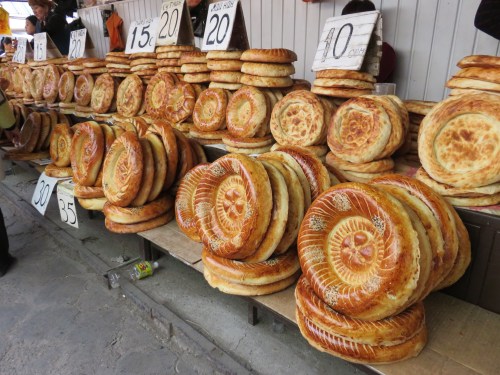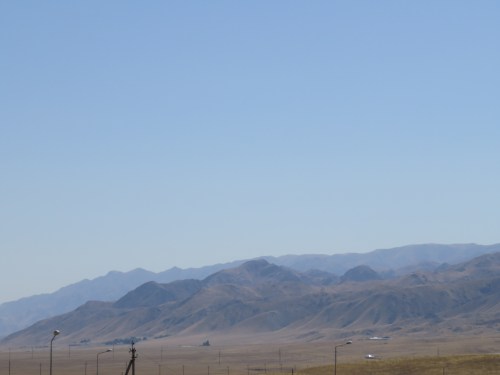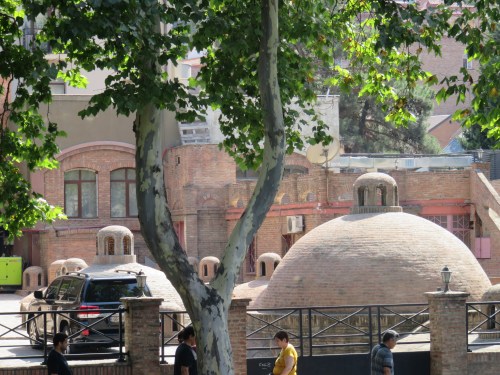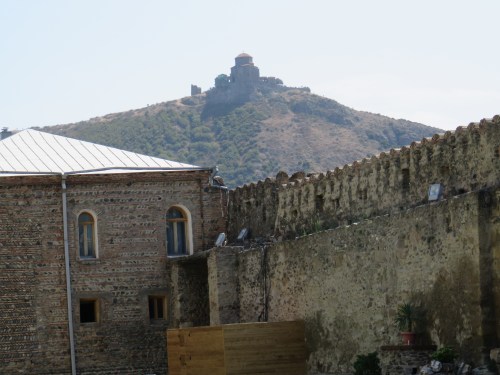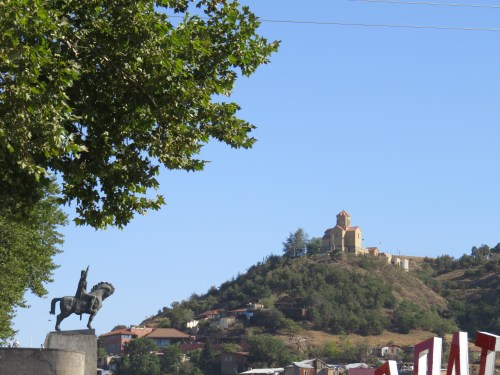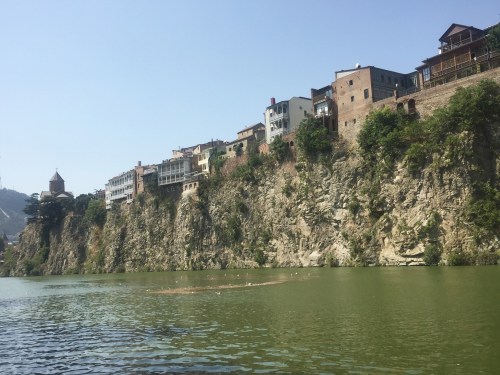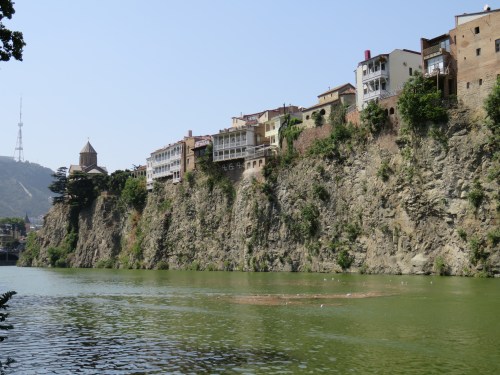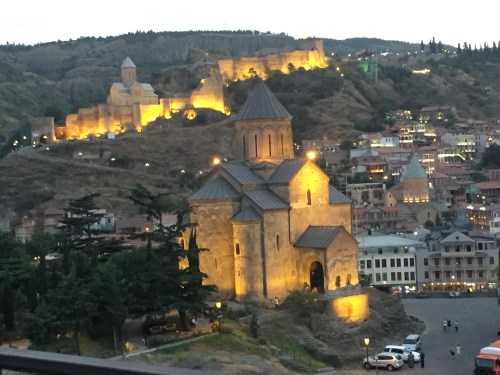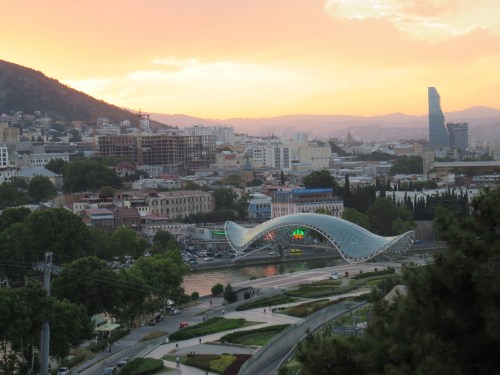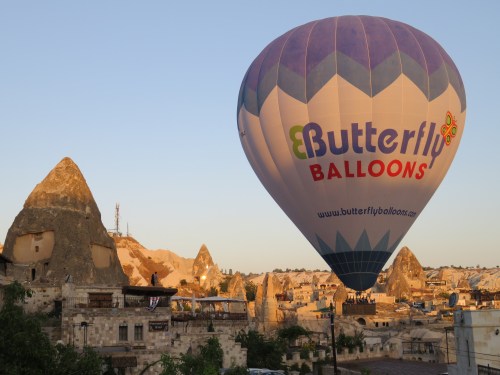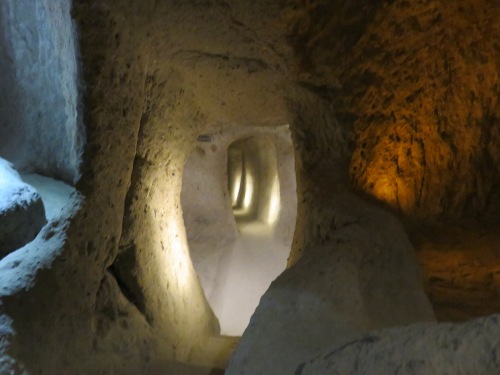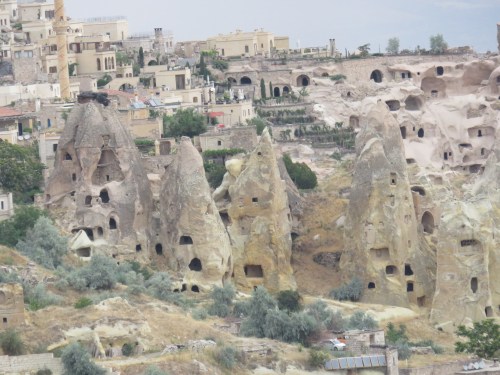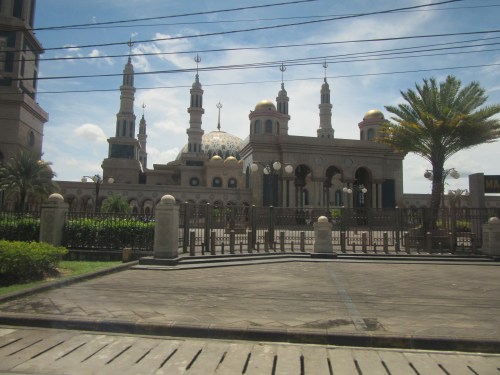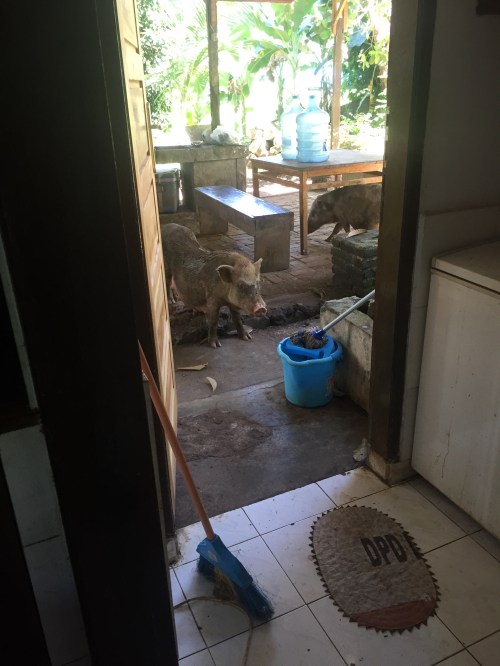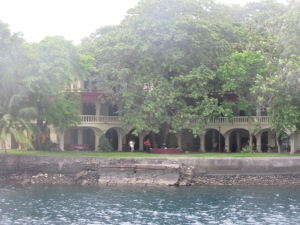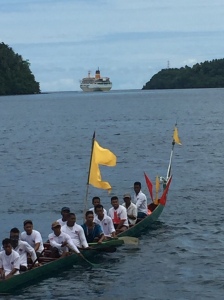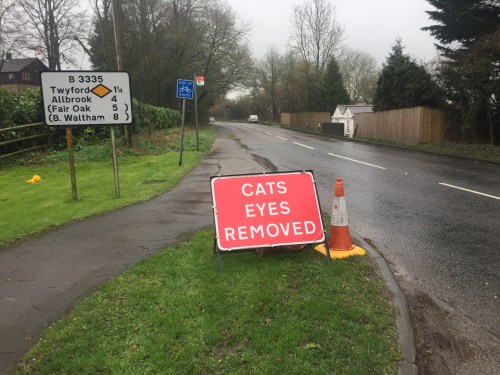I mentioned David from Stantours in my last post and he suggested that he could provide the necessary LOIs (Letters of Introduction) allowing me to visit Turkmenistan, albeit briefly. The difficulties of visiting Turkmenistan are well known so I leapt at the chance knowing full well that I could be disappointed at the conclusion of the application process. He told me where to be and when and the border crossing just happened to be quite close to one of my favorite little cities in the world, Khiva, in Uzbekistan. After somewhat reluctantly leaving Bishkek I was excited to abandon the cold for the oasis of Khorzem set between the vast deserts of Karukem and Kyzylkum and return to Khiva. What an unexpected treat.
The first thing that greeted me was when my taxi driver talked about Hiva, as that is how it is pronounced, not Khiva at all. It is also known as Ichon-Qala, Itchan Kala and also Xiva, take your pick. I tried to book the BnB online where I stayed previously but all indications were that it was sold out this being high season in Khiva, October and November are high season hereabouts. Undaunted I phoned Jaloladdin, the manager, and tried to persuade him that I was suitable guest but he wouldn’t budge until I said I was disappointed not seeing his children now that they were growing up. That did it, I clinched a room at the best little BnB in Khiva. Now I sit in probably the best room (#6) that has a little balcony, table and chair allowing me to sit in the late afternoon sun as I write this.
I wrote a blog post about Khiva three years ago so not only will I have to come up with a new title but also mention a few things not discussed back then. I’ll start with melons, yes, melons. Amongst the melon cognoscenti Uzbek melons are the holy grail, there is a melon festival every year here in Khiva, there are special melon houses built to keep the melons fresh during the winter months known as qovunxona, there are endless melon stalls beside the road and families have special melon carving rituals. It is all very melon centric. The best Uzbek melons are grown here in the Khorzem oasis, so the melons here are the crème de la crème and I enjoy slices at every breakfast. I did just a little melon research and there is an Uzbek melon farm just outside Modesto, California, who knew?
Within the walls of Khiva, and magnificent walls they are, people live, trade, and seem to really enjoy life. On the main street there is a musical instrument museum outside of which is a seller of ethnic music CDs and they are played throughout the day, quite loudly. It is such a treat to see the local ladies, and gentlemen, making their way through the town to the big market just outside the walls, stop, get their rhythm down and start dancing together. This is not put on for tourists, who stop and gape, but to my mind just an honest manifestation of joie de vivre. Today I approached the dancing crossroads and some ladies were gyrating in the street and invited me to join in. There I was swaying coyly and there were tourists taking my photo. Oh dear. Look out for me on Instagram going viral! It was all in good humor, everybody laughed but, no hugs, mustn’t touch Muslim women. That’s how it is, take it or leave it.
The money has changed; in fact it changed within the last few weeks. Previously there was the official rate and the black market rate. One arrived at the border crossing and was basically forced to change money at the official rate to buy food or find a taxi. On arriving at a hotel the owner invariably suggested that he could get a better rate under that tree over there and that is what everyone did. The currency denominations were slightly ludicrous and for $100 one ended up with an enormous pile of Som, so big that a large bag was required to carry them around, as there were no large denominations. Now though it has all changed, the black market rate that was is now the official rate and larger denomination bills have been introduced. Even so, the wad of Som received in exchange for a hundred dollars is still quite impressive. I don’t think the repercussions of this major financial overhaul have really taken effect yet; I can buy a plate of Plov, the national dish (rice and veg), for 75 cents (50P), same for a pot of tea, a souvenir fridge magnet or a bread stamp.
Bread stamp? I was asked to say more about Central Asian bread after a photo in the Kyrgyzstan post. Firstly the loaves are called non and if you didn’t see the photo look a bit like a bagel without the hole in the middle. The baker starts with a circular piece of dough and then pounds it with a bread stamp or chekich, a sort of carved handle with metal pins set into it, producing various designs in the bread depending on the layout of the pins. Ckekichs are widely available as souvenirs in various qualities, I bought one in the market for $1.00 but you can pay up to $5.00 at the souvenir stands, or buy one on Etsy apparently, Ha. The fashioned bread is then placed into a clay, wood fired tandyr that is similar to a tandoori oven. The dough is stuck to the side of the tandyr, water is thrown on it and ten minutes later there is your finished non. It is served with breakfast, lunch, dinner and even with tea and like the melons, delicious.
Hope this hasn’t been too wordy but I very much doubt I will be able to upload any photos from here as the Internet is very slow. In Bishkek each photo uploaded in about five seconds, as I had a router in my room, ecstasy, but here, not so much. I’ll be back with tales of The Door to Hell, Ashgabat and Merv. Until then, au revoir.
PS. Photos finally uploaded from Bukhara.

Market stall holders.

Sweets, candy and biscuits in the market.
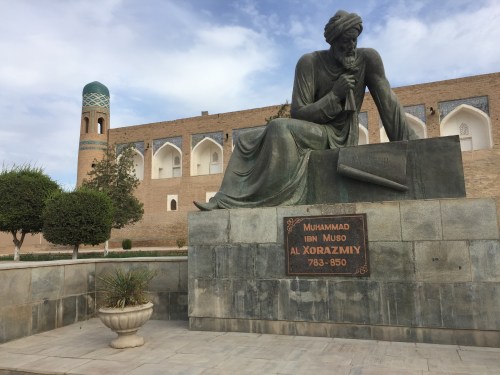
The statue of Al-Khorezmiy who invented algebra, the decimal point and algorithms.
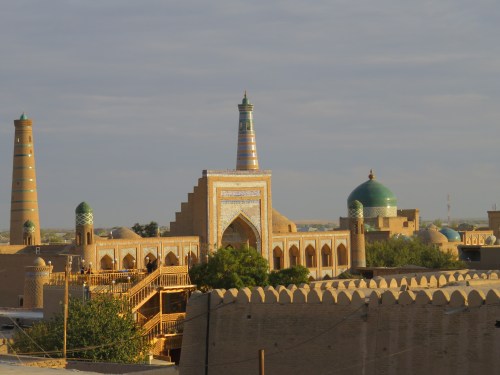
View from BnB rooftop.

Off to the market….

Kalta Minor minaret.

Wedding party procession moving through the town.

Bread oven.

Bread in oven.
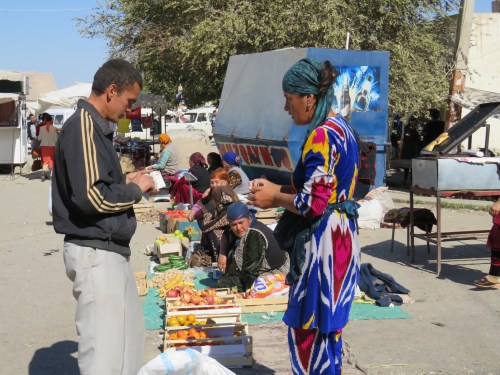
The colors were dazzling.

Melons, melons, melons.

Such glamour.


